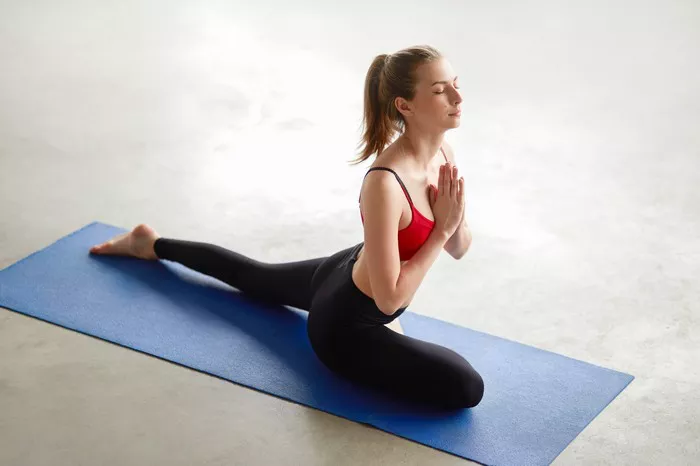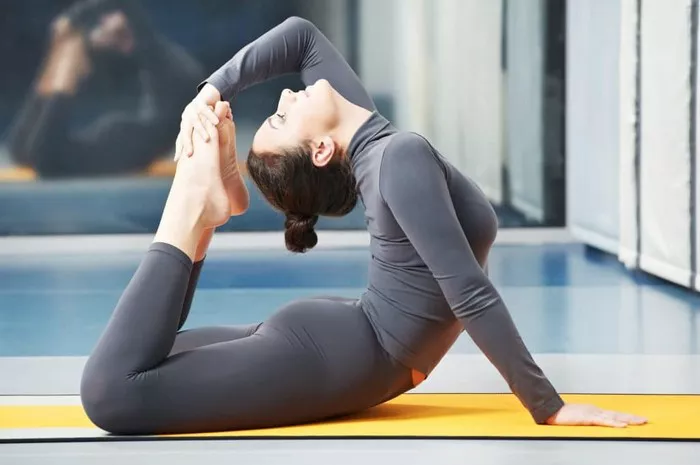The Pigeon Pose, or Eka Pada Rajakapotasana, is a beloved asana in yoga practice known for its ability to stretch the hips, groin, and thighs. Often used in various styles of yoga, it offers profound benefits not only for physical flexibility but also for emotional release. This article provides an in-depth exploration of how to perform the Pigeon Pose correctly, its benefits, variations, modifications, and tips for safe practice.
Understanding Pigeon Pose
Definition and Origins
Pigeon Pose derives its name from the way a pigeon stretches and rests. In Sanskrit, “Eka Pada” means “one foot,” “Raja” means “king,” and “Kapotasana” means “pigeon.” The pose is often included in sequences aimed at opening the hips and preparing the body for deeper stretches and postures.
Importance in Yoga Practice
Pigeon Pose serves multiple purposes in a yoga practice. It is a hip opener, a backbend, and a forward fold, making it a versatile addition to any sequence. It encourages body awareness and mindfulness, helping practitioners connect with their physical sensations and emotions.
Benefits of Pigeon Pose
1. Increases Hip Flexibility
Pigeon Pose is particularly effective for stretching the hip flexors and external rotators, improving overall hip flexibility.
2. Releases Tension
The deep stretch helps release accumulated tension in the hips, which can be particularly beneficial for those who sit for prolonged periods.
3. Improves Posture
By stretching the hip flexors and strengthening the glutes, Pigeon Pose contributes to better posture and spinal alignment.
4. Enhances Circulation
The pose stimulates blood flow to the hip area, promoting overall circulation and vitality.
5. Relieves Sciatica
By stretching the piriformis muscle, Pigeon Pose can alleviate pressure on the sciatic nerve, offering relief from sciatica symptoms.
6. Calms the Mind
The forward bend aspect of the pose encourages introspection and calmness, helping to reduce stress and anxiety.
7. Prepares for Advanced Asanas
Pigeon Pose opens the hips and prepares the body for more advanced asanas that require hip flexibility and strength.
See also: Gentle Yoga Poses: Embracing Serenity and Balance
How to Perform Pigeon Pose
Step-by-Step Instructions
Start in Downward Dog: Begin in Downward Facing Dog (Adho Mukha Svanasana), with your hands shoulder-width apart and feet hip-width apart.
Bring One Knee Forward: Inhale as you lift your right leg towards the ceiling. Exhale as you bend your right knee and bring it forward, placing it behind your right wrist.
Position the Foot: Position your right foot at an angle, with the toes pointing towards your left hip. The further forward you place your foot, the deeper the stretch.
Extend the Left Leg: Slide your left leg back, keeping it straight and allowing your hips to sink towards the ground.
Square Your Hips: Align your hips towards the front of the mat. This may involve adjusting the position of your right foot and left leg.
Lengthen Your Spine: Inhale, lifting your chest and elongating your spine. Keep your shoulders relaxed and away from your ears.
Fold Forward: Exhale as you slowly fold forward, resting on your forearms or extending your arms forward on the mat.
Hold the Pose: Stay in this position for 5-10 breaths, focusing on your breath and allowing your body to relax into the stretch.
Come Out of the Pose: To exit, walk your hands back towards your torso, lift your chest, and gently tuck your left toes under. Transition back into Downward Dog before repeating on the other side.
Alignment Tips
Hips: Ensure your hips are squared to the front of the mat to avoid tension in the lower back.
Knees: Keep your front knee in line with your ankle to prevent strain.
Shoulders: Keep your shoulders relaxed and avoid hunching them.
Back Leg: Your back leg should be extended straight, with the top of the foot pressing into the mat.
Common Mistakes to Avoid
1. Allowing the Hips to Shift
Avoid allowing one hip to rise higher than the other. Engage your core to maintain hip alignment.
2. Overextending the Front Knee
Ensure that your front knee remains bent and does not extend beyond your ankle to protect the joint.
3. Tensing the Shoulders
Keep your shoulders relaxed. Tension in the upper body can affect your ability to deepen the pose.
4. Ignoring Your Breath
Focus on deep, steady breaths. Holding your breath can create unnecessary tension in the body.
Variations of Pigeon Pose
1. Reclining Pigeon Pose
Lie on your back and cross one ankle over the opposite knee.
Gently pull the uncrossed thigh towards your chest for a deep stretch in the hips.
2. Pigeon Pose with a Block
Place a yoga block under your front hip for support, especially if your hips are not yet flexible enough to reach the ground.
3. King Pigeon Pose
From Pigeon Pose, bend your back knee and grasp your foot with your hand, gently drawing it toward your back.
This variation adds a deeper backbend and is more advanced.
4. Supported Pigeon Pose
Use cushions or blankets under your forearms and hips for added support and comfort.
Modifications for Pigeon Pose
1. Use of Props
A bolster or cushion can be placed under the front hip or torso for support.
Blocks can help elevate the forearms if your hands don’t reach the ground comfortably.
2. Adjusting the Foot Position
For those with tight hips, placing the front foot further back can make the pose more accessible.
3. Practicing with a Chair
For individuals with knee issues, practicing Pigeon Pose with the front leg resting on a chair can provide relief.
Integrating Pigeon Pose into Your Practice
1. In a Flow Sequence
Pigeon Pose can be seamlessly integrated into vinyasa flows, following poses like Downward Dog and Warrior II.
2. As Part of a Hip-Opening Sequence
Include Pigeon Pose in a dedicated hip-opening sequence, pairing it with poses like Butterfly, Lizard, and Cow Face Pose.
3. In Restorative Practice
In a restorative context, hold Pigeon Pose for several minutes, using props to support the body and promote deep relaxation.
The Emotional Aspect of Pigeon Pose
1. Releasing Stored Emotions
The hips are often referred to as “the storage space for emotions.” Pigeon Pose can facilitate emotional release, helping practitioners let go of stress, anxiety, and tension.
2. Promoting Mindfulness
Engaging in Pigeon Pose encourages mindfulness and self-awareness, allowing individuals to connect with their emotions and physical sensations.
3. Creating Space for Healing
By opening the hips, practitioners may create emotional space for healing and transformation, both physically and mentally.
Common Questions About Pigeon Pose
1. Is Pigeon Pose Safe for Everyone?
While Pigeon Pose is beneficial for many, individuals with knee or hip injuries should approach it with caution. Consult a healthcare professional before practicing.
2. How Long Should You Hold Pigeon Pose?
Holding Pigeon Pose for 30 seconds to one minute is typical, but more experienced practitioners may hold it longer for deeper stretches.
3. Can I Practice Pigeon Pose If I Have Tight Hips?
Yes, but modifications may be necessary. Use props for support and adjust the position of your foot to find a comfortable stretch.
4. Is Pigeon Pose a Good Preparation for Other Poses?
Absolutely! Pigeon Pose effectively opens the hips, preparing the body for deeper poses like Lotus or Bound Angle Pose.
Conclusion
Pigeon Pose is a powerful asana that offers numerous physical and emotional benefits. By understanding its mechanics, modifications, and variations, practitioners can deepen their practice and enhance their connection to their bodies. Whether you’re a seasoned yogi or a beginner, Pigeon Pose invites you to explore the depth of your hips and the breadth of your being. Embrace the journey, listen to your body, and enjoy the transformative power of this foundational pose.
You Might Be Interested In
Lord of the Dance Yoga Pose: Mastering Balance and Grace























